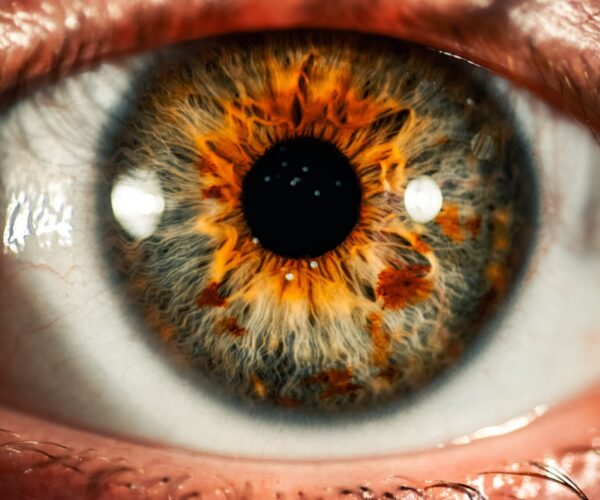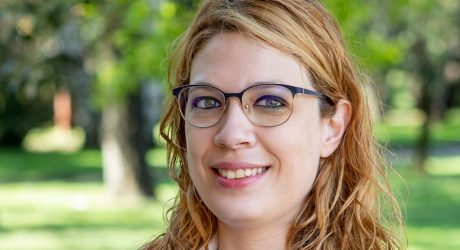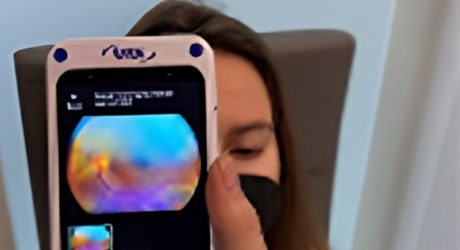The European EIT Health-supported project Retina-Read-Risk will detect diabetic retinopathy through telemedicine
Photo by Colin Lloyd on Unsplash
Nine French and Spanish EIT Health NGO, medical and industrial partners have joined forces with patients to develop a more affordable mobile screening solution for Diabetic Retinopathy, an ophthalmological pathology linked to diabetes.
“Retina-Read-Risk” Innovation project supported by EIT Health officially kicked off its activities in February 2022. The consortium is composed by the Fundació Institut d’Investigació Sanitària Pere Virgili (IISPV) which leads the project, the Institut Català de la Salut (ICS), Telefonica, Grupo TRC, GENESIS Biomed, E-senior association, and the Fondation de l’Avenir.
Some data on diabetic retinopathy – a rather unknown disease linked to diabetes
Diabetes is a little-known, yet leading cause of blindness in Europe.It was estimated that 64 million people have diabetes in the European Region [i] in 2016 or representing around 7% of the Regional population. It is estimated that a little less than a million have vision impairment or blindness because of diabetic retinopathy in the World Health Organisation (WHO) European Region [ii]. In Spain according to a study the incidence of diabetic retinopathy is growing [iii].
Indeed, diabetes can lead to an eye disease called diabetic retinopathy.
Diabetic retinopathy is a disease affecting the capillaries, the small blood vessels in the retina. The disease begins with the destruction of the cells supporting these capillaries, particularly the pericytes, and thickening up to three times the normal size of the membrane separating the tissues, the so-called basement membrane. This aggression leads to the permeabilization of the capillaries, which in turn leads to the formation of retinal oedemas responsible for reduced vision.
These anomalies will then favour the occurrence of capillary rupture, the starting point for the establishment of new abnormal capillary networks. If left untreated, this will lead to haemorrhages in the vitreous (the transparent gel that fills the space between the lens and the retina), the appearance of veils, retinal detachment, and even blindness if no treatment is carried out.
Thus, the treatment of diabetes requires the collaboration of several health professionals: diabetologists, general practitioners, and ophthalmologists. The ophthalmologist can, for example, measure the degree of permeabilization of the capillaries with a fluorescent dye, during the examination of the back of the eye.
The limitations of current screening for diabetic retinopathy
The real difficulty with this disease is the late detection, which only occurs when the first symptoms perceptible to the patient appear at a very advanced stage of the disease. In addition to heavy management, this late detection may result in functional losses for the patient.
This is why, in France, first-line screening is systematically organized for the diabetic population from the age of 10. The NHS (UK) recommend first-line screening from the age of 12. In Spain [iv] the screening is organized by region, for exemple Anlousia that have the higher rate of diabetic people recommend the same kind of first-line screening but for younger patient the protocole is chosen at local level [v].
The project, its launch, its ambition
The number of diabetics is on the increase, due to modern diets and an aging population, among other factors [vi].Moreover, they face numerous difficulties, among them, a decreasing offering of generalist and specialist care [vii], especially in remote areas.
The solution proposed by Retina-Read-Risk consists of building a telemedicine platform for the early detection of the disease. Thanks to solutions combining artificial intelligence and 5G technology, the device would be deployable in both rural and urban areas, through a mobile application.
Retina-Read-Risk project was officially launched the 11th February 2022. It wil be running for a 3-year period of time with the goal of establishing a safer screening process for patients and less time consumering for the medical staff. The consortium includes a great variety of players of the innovation ecosystem: research laboratories, hospitals, a patient association, a telecom provider, a solution integrator, a specialist in the launch of health start-ups and a Foundation recognized as being of public interest for the support of applied medical research. They all have the same objective: improve and personalize the control of diabetic patients through E-health systems.
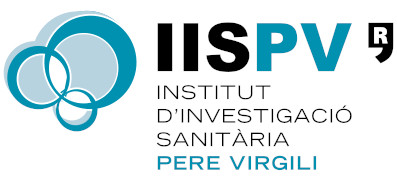 About Fundació Institut d’Investigació Sanitària Pere Virgili (IISPV)
About Fundació Institut d’Investigació Sanitària Pere Virgili (IISPV)
The IISPV is a biomedical research institute placed in the province of Tarragona (Catalonia, Spain) that combines clinical and basic research in order to accelerate the translation of knowledge to the benefit of patients. Founded in 2005, the institute integrates the Hospital Universitari de Tarragona Joan XIII, the Hospital de Tortosa Verge de la Cinta, the Hospital Universitari Sant Joan de Reus, the Hospital Universitari Institut Pere Mata and the Universitat Rovira i Virgili, in order to bring together and manage biomedical research and innovation in the territory. The IISPV aims to be a national and international reference centre in biomedical research and translation, at the service of the population, linking the health centres to the community.
For more information visit: https://www.iispv.cat/en/
 About Institut Català de la Salut (ICS)
About Institut Català de la Salut (ICS)
The Catalan Institute of Health (ICS) is the largest public health services company of Catalonia with a staff of over 51,700 professionals, that provides health care to nearly six million people across the country. As a reference entity of the public health system, the aim of ICS is to improve people’s health and quality of live, through the provision of innovative and excellent health services, regarding both the promotion of health and the treatment of diseases, from the most prevalent to the most complex ones. ICS structure includes 949 primary care centers and local consultancy, 8 Hospitals and 7 research institutes, including IISPV as a one of them. Our organization mission states to be a model that, through its structure and participants, responds to projects of strategic relevance to the ICS, guaranteeing the capacity and sufficient knowledge to execute them in short terms and obtaining fast returns in the form of results and value for the organization. ICS’ vision would become a reference and reliable model for all management structures, corporate and territorial, and ICS professionals to promote innovative projects, advise on their approach and relate, if necessary, external agents that collaborate in its deployment and / or provide resources. Since mid-2021 Mr Francesc Iglesias , currently Deputy Director of ICS, is the chairman of the Governing Board of EIT Health Spain.
For more information visit: http://ics.gencat.cat/es/inici/index.html
 About Telefonica
About Telefonica
Telefónica is one of the world leaders integrated operator in the telecommunication sector, providing communication, information and entertainment solutions, with operations in 12 countries in Europe and Latin American. As of the end of 2020, Telefónica’s total number of customers amounted more than 345 million and 113,000 professionals. Telefónica spends more 4,600 million euros each year on technological innovation, including more than 950 million euros on R&D of new products, services and management systems and improvement of existing ones. In the health sector, Telefonica is working in several areas like Telemedicine, geo-localised transport of living tissue between hospitals, assisted surgery operations with 5G and VR, etc.
For more information visit: https://www.telefonica.com/en/
 About Grupo TRC
About Grupo TRC
Grupo TRC has over 30 years of experience working hand in hand with groups of hospitals, developing applications to optimize and integrate all activities and processes of a health center in a unified platform. The experience in the integration of advanced telecommunications systems, in the deployment of voice operator and connectivity services and in the development of customized software, both public and private sectors, national and international, are the guarantee of the commitment to the quality of our deployments, solutions and services.
For more information visit: https://www.grupotrc.com/
 About GENESIS Biomed
About GENESIS Biomed
GENESIS Biomed is a consultancy firm in the biomedical healthcare sector specialized in providing consulting services in the genesis and first phases of lifecycle of biomedical spin-off and start-up companies, entrepreneurs, and research centers. Based in its expertise GENESIS Biomed helps entrepreneurs and researchers to shape their business plan and we support them in the private fundraising process. GENESIS Biomed has raised >66,5 M€ in the last years in 18 rounds. GENESIS Biomed expertise domains are biopharmaceutical, biotechnological, medical devices, in vitro diagnostic, nutraceutical and cosmetic. With more than 20 years of expertise in the healthcare sector, GENESIS Biomed is born in May 2017, and it is located in the Barcelona Science Park and Madrid center.
For more information visit: https://genesis-biomed.com/
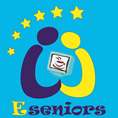 About E-seniors
About E-seniors
E-Seniors is a french non-profit association, founded in 2004 by Monique EPSTEIN. E-Seniors aims at fighting against e-exclusion by providing access to and training in ICT to seniors and/or disabled people. Its main objectives are bridging and shrinking the digital gap between generations, caring for elders by fighting against senior isolation, and opening new horizons for efficient use of free time. Besides teaching “basic computer skills”, E-Seniors has opened more thematically oriented workshops for “advanced” students, dealing with, for example, digital images and sounds, interactive messaging and chat, “writing memories”, and meetings dealing with the fight against e-exclusion. Through its work for elderly people and with them, the association tries as well to enhance awareness of the importance of ICT solutions in everyday life.
For more information visit: https://www.e-seniors.asso.fr/en_main.htm
 About Fondation de l’Avenir
About Fondation de l’Avenir
The Fondation de l’Avenir aims to support and promote applied medical research for the benefit of patients. Created in 1987 by the Mutualité, it has been recognized as a public utility since 1988. Today, the Foundation is the link between the mutualist movement and public health actors. The Fondation de l’Avenir can count on more than 50,000 donors and 40 partners from the social and solidarity economy, all of whom are mobilized to advance medical progress. The Foundation has financed more than 1,200 projects since its creation, including many world firsts. It is managed by an Executive Board, chaired by Marion LELOUVIER, under the control of a Supervisory Board, chaired by Daniel HAVIS.
For more information visit: https://www.fondationdelavenir.org/
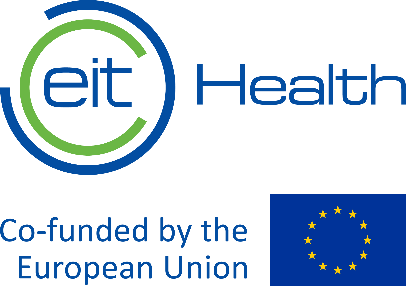 About EIT Health
About EIT Health
EIT Health is a network of best-in-class health innovators with approximately 150 partners and is supported by the European Institute of Innovation and Technology (EIT), a body of the European Union. We collaborate across borders to deliver new solutions that can enable European citizens to live longer, healthier lives. As Europeans tackle the challenge of increasing chronic diseases and multi-morbidity, and seek to realise the opportunities that technology offers to move beyond conventional approaches to treatment, prevention and healthy lifestyles, we need thought leaders, innovators and efficient ways to bring innovative healthcare solutions to market. EIT Health addresses these needs. We connect all relevant healthcare players across European borders – making sure to include all sides of the “knowledge triangle”, so that innovation can happen at the intersection of research, education and business for the benefit of citizens. EIT Health: Together for healthy lives in Europe.
For more information visit: www.eithealth.eu
[i] NCD Risk Factor Collaboration, 2016.
[ii] Flaxman et al., 2017.
[iii] Romero-Aroca P, Navarro-Gil R, Valls-Mateu A, et alDifferences in incidence of diabetic retinopathy between type 1 and 2 diabetes mellitus: a nine-year follow-up studyBritish Journal of Ophthalmology 2017;101:1346-1351.
[iv] Borja Corcóstegui, Santiago Durán, María Olga González-Albarrán, Cristina Hernández, José María Ruiz-Moreno, Javier Salvador, Patricia Udaondo, Rafael Simó, “Update on Diagnosis and Treatment of Diabetic Retinopathy: A Consensus Guideline of the Working Group of Ocular Health (Spanish Society of Diabetes and Spanish Vitreous and Retina Society)”, Journal of Ophthalmology, vol. 2017, Article ID 8234186, 10 pages, 2017. https://doi.org/10.1155/2017/8234186
[v] Martínez Brocca MA C. Diabetes mellitus: Proceso asistencial integrado [Diabetes mellitus: integrated health care process. 3rd edition. Seville: Consejería de Salud-Junta de Andalucía, 2018.
[vi] Assurance maladie, Amelie.fr, Causes et facteurs favorisants du diabète, 08 décembre 2021.
[vii] Difficultés et adaptation des médecins généralistes face à l’offre de soins locale. H. Chaput, M. Monziols (DREES), B. Ventelou , A. Zaytseva (AMSE), G. Chevillard, J. Mousquès (Irdes), L. Fressard, P. Verger (ORS Paca), M-C. Bournot, J-F. Buyck, A. Jolivet (ORS Pays de la Loire), F. Zemour (URPS-ML Provence-Alpes-Côte d’Azur), T. Hérault (URML).

